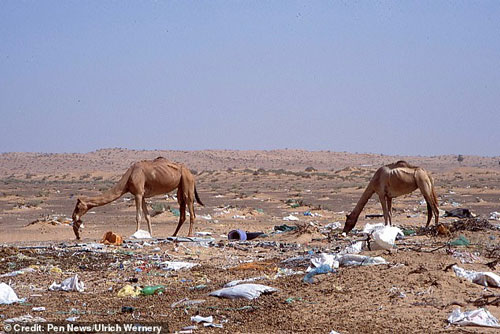Dubai, Uae
Across the globe, plastic pollution is not only wreaking havoc to the environment and marine life, but it has also started adversely affecting land animals.
According to a report by The Daily Mail, about 300 camels have lost their lives in the deserts of Dubai after eating plastic.
Scientist Marcus Eriksen, who has been researching pollution in the deserts, said that he found “sun-bleached camel bones alongside the mounds of plastic they had died trying to digest.”
Dr Eriksen also revealed that camels are dying a slow death because of ingesting heaps of plastic, adding that plastic continues to accumulate in the animal’s stomach over weeks, months, or even years.
‘I was in Dubai surveying plastics in the Persian Gulf when a camel vet, Ullrich Wernery, from the Central Veterinary Research Laboratory, asked me to join him in the desert,’ said Dr Eriksen.
‘We found five skeletons of camels buried in the sand with masses of plastic waste in their chests. The camels only know that what isn’t sand, is probably food.”
He added that plastic mimics the natural food that camels eat, adding that the animal is attracted to plastic wrappers containing food waste, such as oil and salt.
According to vets, huge mounds of plastic were found in the stomachs of dead camels, including bags, bottles, ropes, and other plastics.
“When camels ingest these plastic items, they slowly calcify into a solid mass, leading to the eventual death of the animal.”
Dr Eriksen said that the accumulation of plastic can cause the camel to always feel full, and to eventually stop eating altogether.”
“[In this manner], the camels get malnourished and die,” he said.—AP









